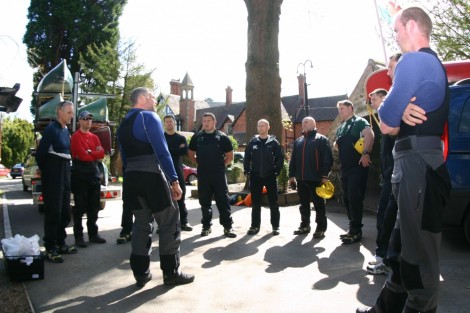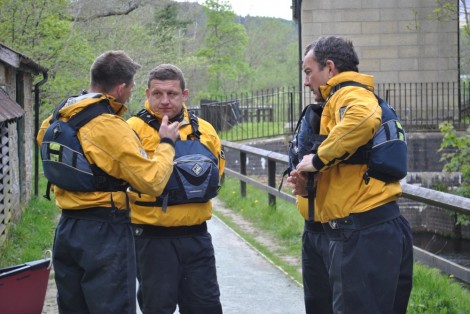Yukon River Quest, Race to the Midnight Sun
Next Friday I will be flying out to Whitehorse, Yukon Territory in the North of Canada to take part in this years Yukon River Quest, which is also known as the “Race to the Midnight Sun” and is billed as “The most spectacular paddling race in the world!”
I will be heading out for this years race with two teams, one of which is from London Irish Premier Rugby Club, and the other is from Interserve, which is one of the world’s foremost support services and construction companies. I will be member of the team from London Irish Rugby comprising of Toby Booth, Justin Bishop, Neil Hatley, Gavin Gleave, Tony Cilia and of course myself. As well as successfully completing the race our aim is to raise money for our chosen charity Help for Heroes, which helps wounded service men and women that have been injured whilst serving in Iraq or Afghanistan. You can visit their site at www.helpforheroes.org.uk and find out more about the fantastic work they do.
The 14th Annual Yukon River Quest starts to the east of Alaska at Whitehorse, Yukon on the 27th June 2012 finishing some 450miles/745km later on Armed Services Day, the 1st July just below the Arctic Circle, at Dawson City, Yukon. Athletes paddling canoe/kayak, solo, tandem and crewed join from around the world to test their endurance, racing day and night along the 450miles/745km of rugged river shoreline to the Klondike in the most spectacular paddling race in the world.
The Yukon River Quest had its birth in the Dyea to Dawson Centennial Race to the Klondike. In 1997 and 1998, up to 50 two-person teams hiked over the 33-mile Chilkoot Trail from Dyea, Alaska to Lake Bennett, and then got in their canoes and paddled 100 miles of headwater lakes to the beginning of the Yukon River in Whitehorse, where they continued on for another 460 miles to Dawson City. The event was a tremendous success, drawing adventure athletes from around the world, but the best teams were always the best paddlers.
Now a days the race starts with a 400m run to the boats and launching point, each team will then follow the route taken by prospectors chasing the last great gold rush of 1897. Like the aspiring miners of the Klondike, the race is more than just the story of gold and glory. To get to their final destination of Dawson, each team will have to endure a daunting challenge on a perilous river in raw wilderness – at least 30% of participants do not complete the race due to the severity of conditions. All teams must be self sufficient, for in the wilderness if you capsize and lose your boat it is possible you may be out there on your own for days.
There are only two compulsory stops throughout the entire race. The first is at Carmacks, which is approximately 220miles/340km in to the race and must be reached within 35 hrs. Here teams must take an enforced minimum 7 hour rest before continuing. The second compulsory stop is only for 3 hours and comes after 374miles/602km and is located at Kirkman Creek. Other challenges that we will encounter during the race include the 30 mile long Lake Laberge which can often involve strong winds and waves, and the aptly named Five Finger Rapids or Rink Rapid. I was also a little concerned when I had to sign a disclaimer saying that I accepted the risk that I may be mauled by bears, burnt to a crisp in forest fires and that I may be several days from help!!
You find out more about the event by visiting www.yukonriverquest.com
We have entered in the Voyageur class, which means we will be paddling a Voyageur style of canoe just like the one in photo below.
The Voyageurs were the people who engaged in the transportation of furs by canoe during the fur trade, it is a French word which literally means “traveller” The Voyageurs used two types of craft during the era of the fur trade. The famous Canot de Maitre on which the fur trade depended was around 36 feet long, had a crew of 6-12 and was capable of carrying 3 tons over the route from Montreal to Lake Superior, hence it was also know as the Montreal Canoe. The smaller Canot du Nord carried a crew of 6 or 8 and a cargo of around 1.5 tons over the smaller lakes, rivers and streams of the Northwest.
The Voyageurs who crewed these boats were also know as Engage’s or hired canoe men and would have fulfilled different roles. The Gouvernail would have been in the stern of the canoe and acted as a steersman. The Avant was in the bow and as well as being the captain and lookout he was also responsible for steering. The remainder of the crew were the work horses and were know as Milieu or middle paddler.
All of us involved have been putting in quite a lot of training for the event in various ways, including a having spent a weekend in North Wales and discovering the delights of the River Dee!
You can find out more about our challenge by visiting
www.h4hyukonriverquest.moonfruit.co.uk/#
Please show your support for us by visiting our just giving page
http://www.bmycharity.com/InterserveLondonIrishYUKON
A big thank you to all the following for there help and support in making this happen
Palm Equipment
Desperate Measures
Outdoor Active
Rab Outdoor
UCLAN
I will be wearing a SPOT GPS tracking device throughout the event enabling you follow our progress throughout and will post a link to this later.
Meanwhile back to the maps, sorting equipment and packing! Now where did I put my passport?
See you on the water…..
Jules
comment
Please Leave a Reply
TrackBack URL :















Very good publish, i undoubtedly cherish this webpage, continue to keep on it